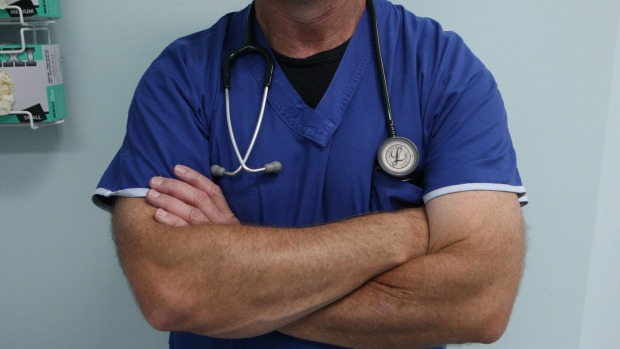
The “real” increase in the cost of private health premiums could be as high as 10 per cent a year over the next five years, new analysis by UBS insurance analyst James Coghill shows. Photo: Peter Braig PBR
Households struggling to afford the cost of private health insurance should brace themselves for more bad news.
The “real” increase in the cost of premiums could be up to 10 per cent a year over the next five years, new analysis by UBS insurance analyst James Coghill shows.
The data is troubling for customers and also for insurers like Medibank Private, Bupa and nib, which are facing slowing revenue growth as customers shop around for cheaper deals.
Mr Coghill, in a recent note to clients, said the annual premium increases approved by the Health Minister were expected to come in at the rate of about 6 per cent in the coming years, which is already more than double the rate of inflation.
However, recent changes to the way the private health insurance rebate is applied will hit hip pockets more.
The 30 per cent rebate was introduced in 1999 and along with the lifetime health cover loading, which penalises people who take health cover in their later years, has been effective in driving take-up of insurance.
In 2000, the proportion of the population with private health cover rose to about 45 per cent, from about 31 per cent the previous year.
But Labor policy that was enacted on July 1, 2014 means that the rebate, which costs the government $6 billion a year, has begun to shrink gradually. This is because it is indexed now to the economy-wide rate of inflation, as opposed to the higher rate of premium inflation.
Mr Coghill said rising premiums, combined with the scale-back of the rebate and big reductions in the rebate when people earn too much (because of Labor-implemented means testing, which the Coalition has backed away from repealing), means a policyholder earning $85,000 a year will face an annual increase of 9.7 per cent over the next five years.
The “average” earner would also face “one sticker shock increase of [about] 20 per cent for the first income band change,” he said.
“At this rate of PHI (private health insurance) inflation, premiums would increase from 1.7 per cent of disposable income (ie, gross income less tax and Medicare levy), to 2.3 per cent by 2019-20 and 2.8 per cent by 2024-25,” he said.
This is bad news for the insurers, as Mr Coghill noted. He estimated one in five policyholders could face this level of increase over the next three years.
“If one-third of these react by switching insurers for a better deal, this would theoretically equate to [an approximately] 2 per cent lift in the industry switching rate, which currently sits at [about] 4 per cent,” he said.
